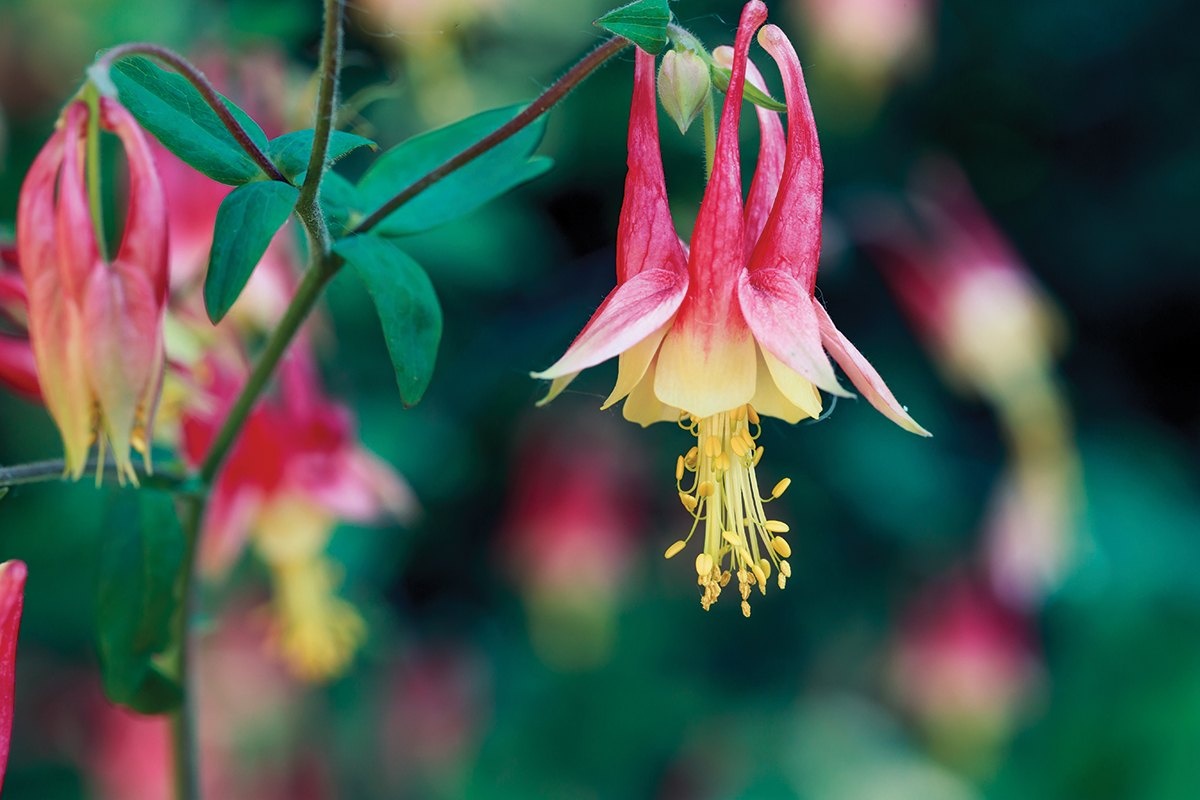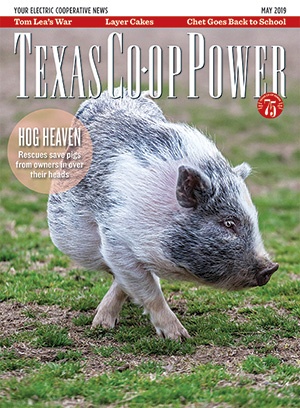Quick question: How many of Texas’ 5,000 wildflower species can you name? If you can list 20, you are probably in the top 10 percent of the state’s nature lovers. However, not being able to name the vast majority of them does not mean the flowers are scarce.
For scattered among the vast fields of bluebonnet, Indian paintbrush, coreopsis, pink evening primrose and gaillardia, you may find a rare treasure, a seldom-seen flower nearly lost in a sea of color.
Each region of the state has wildflowers that are hidden gems, not typically seen because they are uncommon. The factors contributing to their rarity include requirements for light, moisture, soil composition, temperature and stage of development.
Although we can all appreciate the splendor of Texas’ best-known wildflowers, we also should sing the praises of those that typically get little mention. A few of those rare and sometimes unusual-looking flowers even reside in the eastern half of Texas.
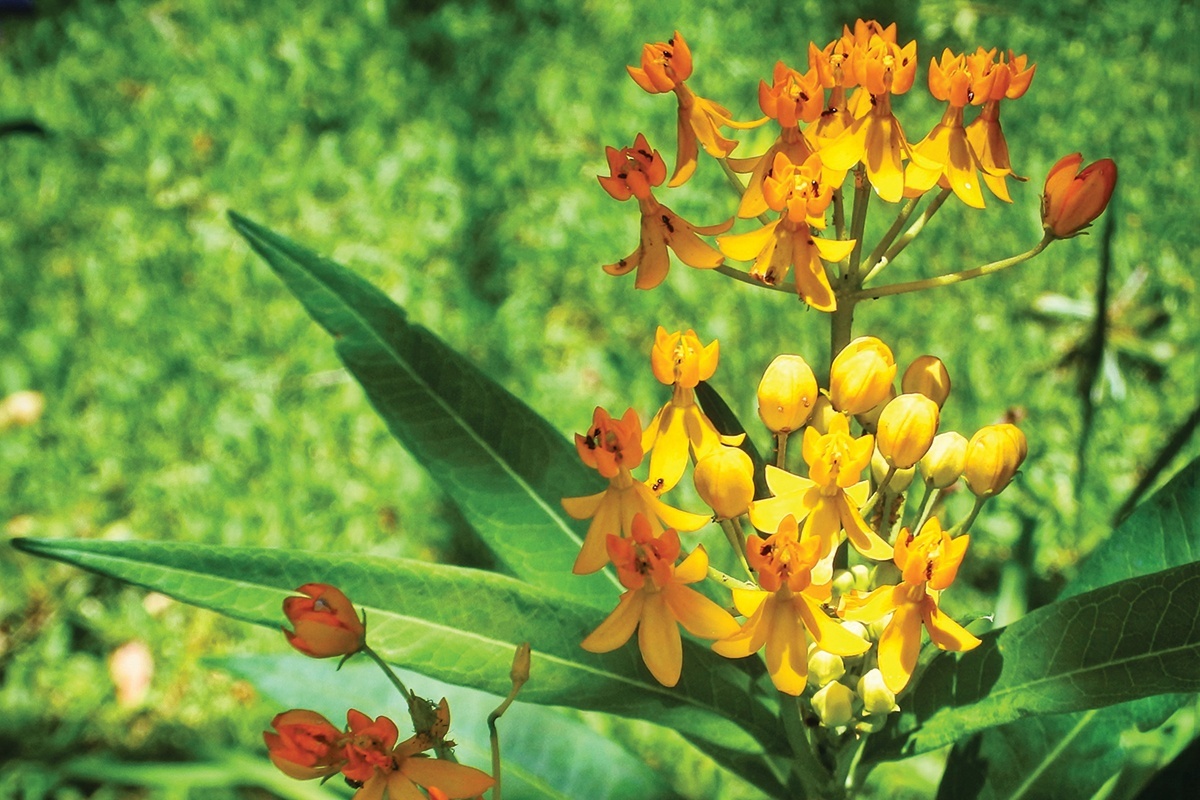
Butterfly weed
Citysqwirl | iStock.com
Butterfly weed (Asclepias tuberosa)
The brilliant orange flowers of butterfly weed punctuate open spaces and pastures in early summer. They attract insects with their abundant nectar and draw attention with their bright color.
According to the excellent field guide Wildflowers of Texas, by Gayata Ajilvsgi, butterfly weed is an upright to sprawling, usually clump-forming perennial that grows up to 3 feet tall. The attractive petals are orange to orange-red (sometimes yellow). The nectar is a rich, watery juice instead of the milk sap of other Asclepias species and is a favorite food of monarch butterflies, certain types of bees and bee-like flies.
Humans also can consume this plant. The seeds and roots of butterfly weed make a gentle laxative, and a root tea has been used for heart problems and lung inflammations. Other common names for this plant include chigger weed and pleurisy root. You’ll find it growing in various soils of prairies, fields, thickets, dunes, open woods and hillsides.
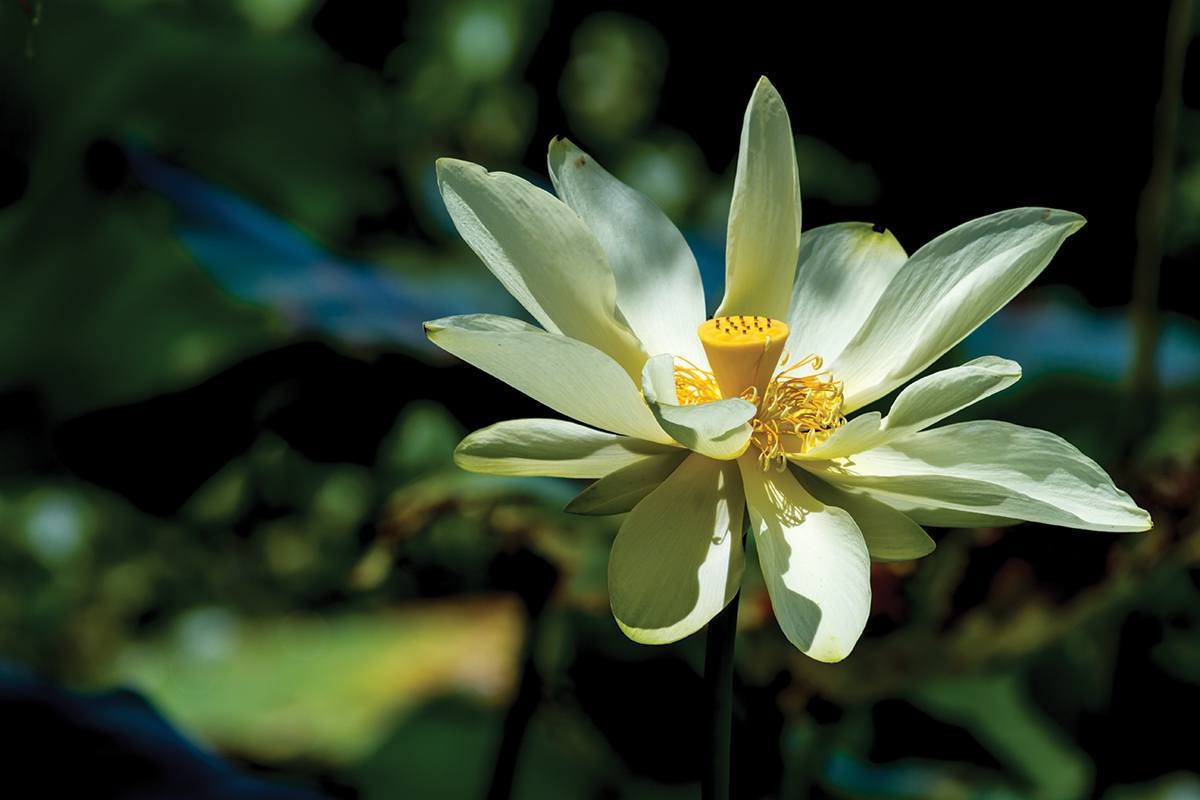
American lotus
Richard McMillin | iStock.com
American lotus (Nelumbo lutea)
Actively growing in the summer, this aquatic plant is found in swamps, lakes and places that often flood. Its leaves are large and round, allowing water to roll around in the breeze, like quicksilver in a bowl. The flowers—nearly a foot in diameter—are white to pale yellow in color and rise above the surface of the water. This flower is among the most exotic-looking in the state, lending an Asian appearance to the locations where they are found.
The roots of this plant, called rhizomes, are anchored in the mud and feature a large tuber that has been used as a food source. The seeds are also edible and sometimes called alligator corn.
Easily reproduced by cut rhizomes, this sometimes aggressively growing plant can spread from one lake to another by the propellers of unwary boaters, causing problems for navigation and the growth of other indigenous plants.
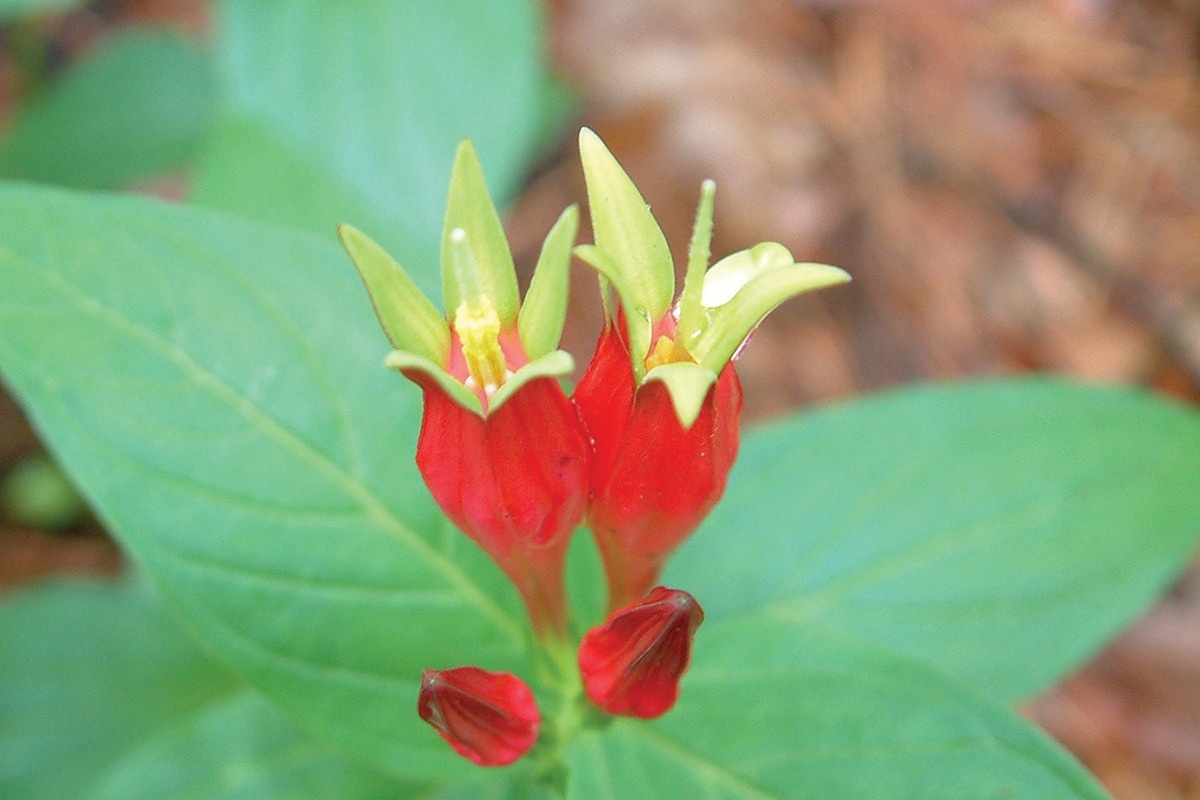
Indian pink
Courtesy Stefan Bloodworth, Lady Bird Johnson Wildflower Center
Indian pink (Spigelia marilandica)
This flower offers a delightful feast for the eyes: a brilliant red, tube-shaped blossom with a lime green and yellow star-shaped spray in the center. Also known as woodland pinkroot, this native plant is a clump-forming perennial, growing in shaded, open woodlands and reaching up to 3 feet in height. Watch for the blooms from March through May. They are not common and are typically found in mature forest areas.
Wild columbine (Aquilegia canadensis)
Looking for all the world like a flower arrangement sitting on a table suspended upside-down, this red and yellow wildflower is captivating but rarely seen in the wild. According to Wildflowers of Texas, it prefers to grow in damp, semishady crevices and cracks of steep ravines, limestone formations and rocks covered in moss. Typically found in the central part of the state, it can be grown from seed in moist, partially-shaded niches of a garden. This plant serves as one of several larval foods of the spring azure butterfly. Poisonous to eat, the flower was used as a love charm and for medicinal purposes by several native Texas tribes.
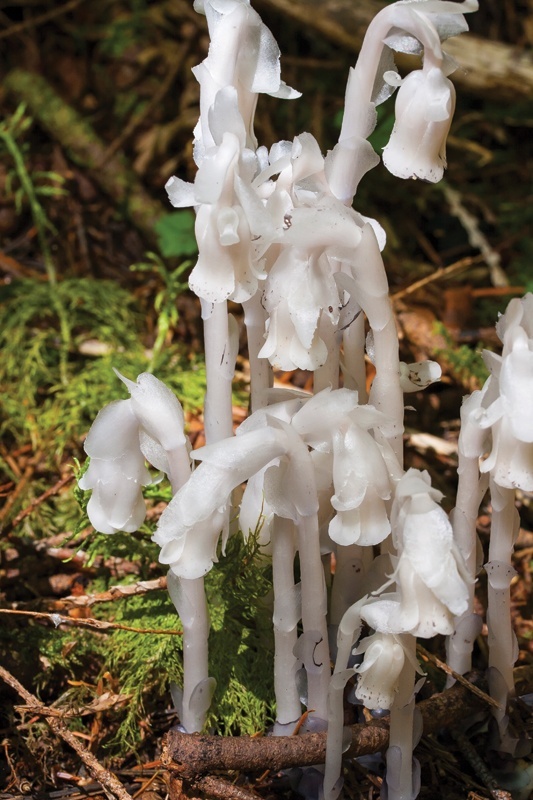
Indian pipe
Egschiller | iStock.com
Indian pipe (Monotropa uniflora)
If you’re lucky enough to capture a glimpse of Indian pipe, it may first appear to be an apparition in the understory of a forest. This perennial has no chlorophyll to obtain energy from the sun, surviving via a complex relationship with a fungus and a host plant. Brittle and succulent, Monotropa varies in color from creamy white to rosy pink, sometimes with black markings. You’ll find it growing in moist, nutrient-rich soils beneath a pine-hardwood forest. Its flowers are usually curved downward like a water faucet.
Due to its unusual appearance, this plant has several common names including Dutchman’s pipe, ice plant and ghost plant. It was highly valued by native tribes for its medicinal properties and has been used as a tea for convulsions and as an eyewash.
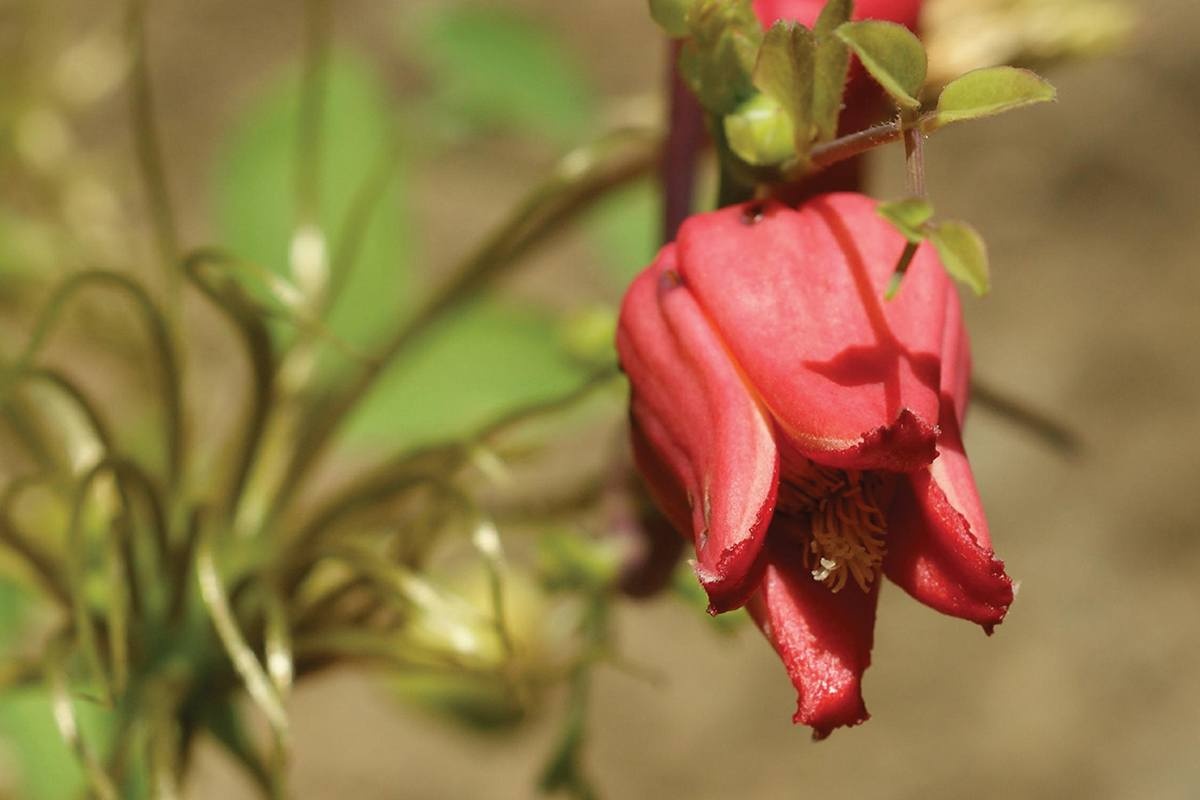
Scarlet clematis
Courtesy Ray Mathews, Lady Bird Johnson Wildflower Center
Scarlet clematis (Clematis texensis)
Often overlooked in the damp, rocky areas of the Texas Hill Country, scarlet clematis possesses a small but vibrant bloom. As described in Wildflowers of Texas, this flower grows in rocky, chalky soils of shaded cliffs, slopes and ledges along moist ravines, streams and rivers. Native and exclusive to Texas, it sports leathery, red flowers that grow on a woody vine. The fruit consists of a showy, feathery ball of plumed seeds. This plant is frequently sold by nurseries and does fairly well if allowed to climb a trellis or fence. A tea made from the dry, chopped stems has been reported as a treatment for headaches, especially migraines.
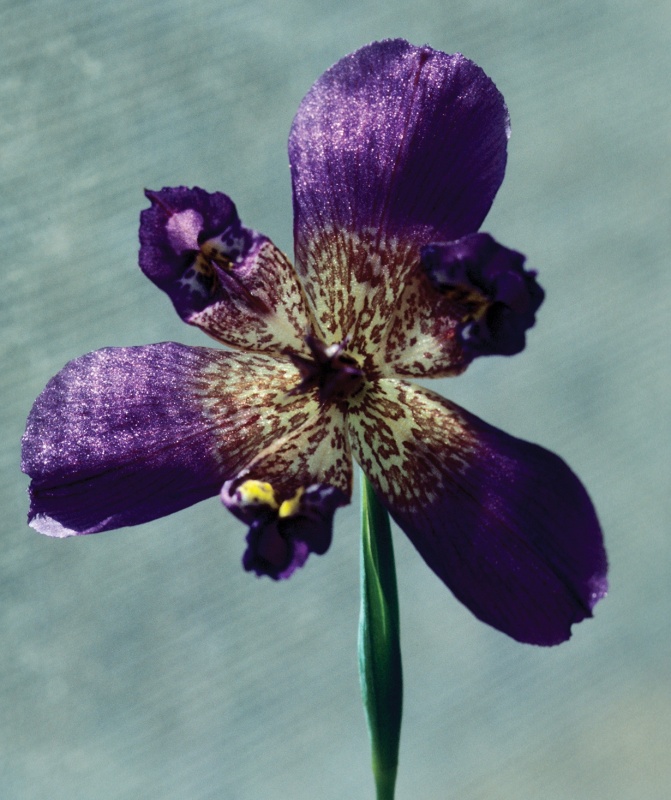
Purple pleat-leaf
Courtesy Sally and Andy Wasowski, Lady Bird Johnson Wildflower Center
Purple pleat-leaf (Alophia drummondii)
Tucked away in bright understory woodlands, this member of the iris family has an orchidlike appearance. This is a “Look at me, I’m beautiful!” wildflower. So pretty, it will stop you dead in your tracks. Go ahead and bend down to take a gander at this rare gem.
Find it in dry, sandy soils of open woodlands, grasslands and prairies. The flower usually lasts only half a day, so grab your camera to capture the three outer segments, which are purplish and velvety to the touch as well as the yellowish, reddish brown spotted interior, shaped like three cups. This plant can grow from seeds sown in autumn in loose, sandy soils. However, they do not bloom until their second year of growth.
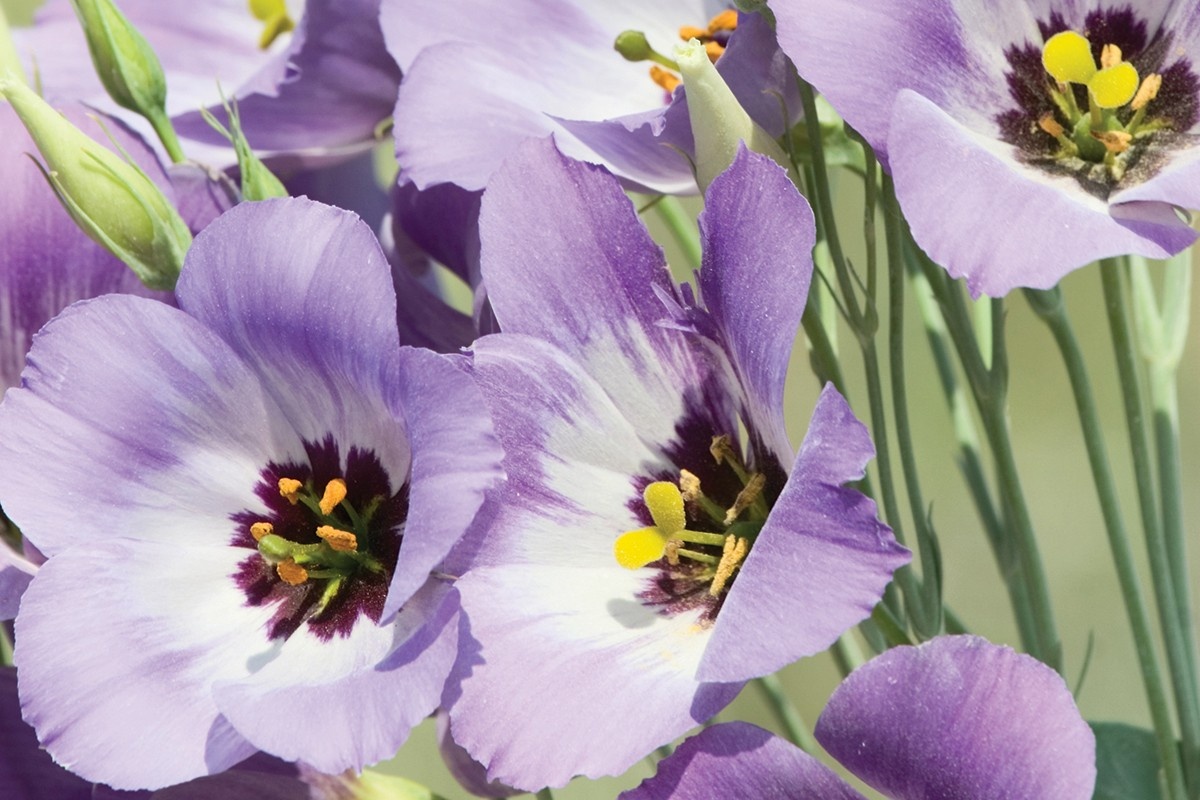
Bluebell
Skyhobo | iStock.com
Bluebell (Eustoma russellianum)
This wildflower offers a dreamy range of colors, with five petals varying from blue-purple to white and a darker purple center. Look for it in fields, prairies and at edges of ponds in the post oak savannahs of Texas. Considered one of Texas’ most attractive wildflowers, bluebells lend themselves well to cultivation in damp places with plenty of light. Sadly, widespread mowing practices have greatly reduced bluebell numbers in recent years. Also called purple prairie gentian, the cut flowers of this plant can last for more than a day. You can buy the seeds and the cultivars from commercial sources.
As you’re driving down the road through April and May and feasting your eyes upon seas of swaying bluebonnets, Indian paintbrushes and pink evening primroses, remember that interspersed among the plethora of commonly known wildflowers are the occasional odd blooms, easily missed on the macro scale. These hidden treasures are well worth close inspection and just as deserving of our admiration as their more conspicuous brethren.
